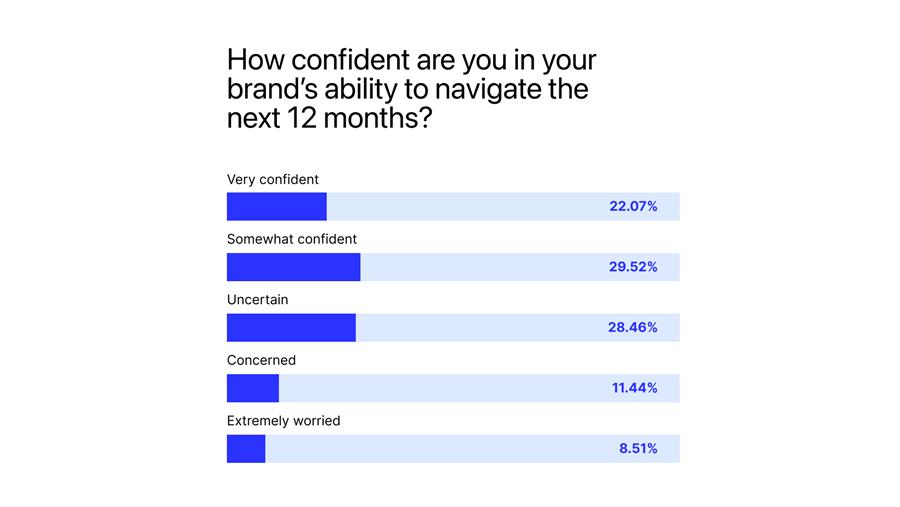
Back

Content
Content

Welcome to the DTC family!
Oops! Something went wrong while submitting the form.

Back

Content



📣 This is a special tariff survey results edition of the DTC Newsletter.
We're hitting pause on our usual programming to bring you urgent, timely insight into a shift that could reshape how DTC brands operate.
This report is brought to you by DTC and Pilothouse. Want to chat with Pilothouse about how your brand can navigate the tariffs? Book a call here.
Two days ago, U.S. President Donald Trump announced sweeping tariffs on 180+ countries and territories—on top of those imposed in March. For many DTC and ecommerce brands, key sourcing and fulfillment hubs may no longer be financially viable. Adding to the pressure, a new 10% baseline tariff now applies to all U.S. trading partners.
If you’re feeling the weight of these changes, you’re not alone. We wanted to gauge the industry’s response, so yesterday, April 3rd, we launched a six-question survey to capture market sentiment.
This newsletter breaks down the results from the 500+ responses—what brands are thinking, how they’re adapting, and what comes next.
*Please note, all data displayed below has been filtered to show only responses of participants who own, run, or work in a DTC brand.

Respondents answered this question using the below scale:
Deeper Insights:
Across all revenue bands, sentiment was surprisingly consistent. Notably, about 76% of all respondents were U.S.-based, and responses between U.S. and non-U.S. brands were largely aligned, indicating that tariff pressure is felt globally in the DTC space — with similar stress levels reported regardless of geography.

Survey respondents chose from one of the following:
Deeper Insights:
When asked how immediately they’re feeling the impact of tariffs, over one-third (34%) of DTC brands say it will hit hard on their next purchase order, while another 31% expect the blow to land in the next 3–6 months. 22% are already seeing margin compression, and 13% say the tariffs don’t really affect them.
The data shows a consistent pattern across revenue sizes: most brands expect the worst is yet to come. Larger brands ($10M+) are especially bracing for impact — 40% say their next PO will be hit hard, compared to 30% of sub-$1M brands. This indicates that while margin compression is already underway for some, the majority of brands are still in a holding pattern — watching and waiting for the financial squeeze to begin.

Respondents selected from:
Deeper Insights:
Among DTC brands of all sizes, nearly half (49%) say the new tariffs are significantly increasing their landed product costs, with another 24% seeing a slight increase.
This trend is consistent across revenue brackets, from small brands under $1M to those doing over $10M annually. Only 11% report no cost increase, and about 16% are still unsure—underscoring just how broadly and deeply these tariffs are affecting the cost structure of DTC businesses, regardless of scale.

Respondents selected from the below list, selecting as many responses as applicable to their business:
Deeper Insights:
To cope with tariffs, DTC brands are overwhelmingly turning to pricing and sourcing strategies. The most common response is raising prices (71.28%), followed by looking for new suppliers (44.94%) and cutting costs or laying off staff (34.31%). Many brands are also taking defensive positions, with 41.49% pausing growth plans and 22.87% reducing order volumes — clear signs that tariffs are creating ripple effects across hiring, planning, and inventory strategies.
Interestingly, 13.4% selected “other” — and deeper insights show that this group is mixed. Some aren’t taking action because they’re either unaffected, still assessing the situation, or insulated due to domestic sourcing or geography. Others are getting creative: adding new revenue streams, shifting logistics (like warehousing or sourcing), or improving internal efficiency to offset the impact. While a few brands are absorbing minor cost increases, others are facing more severe outcomes, like customer loss or even considering shutdowns.

Respondents selected from:
Deeper Insights:
When asked how confident they feel navigating the next 12 months, the DTC landscape shows a mix of optimism and anxiety.
About 22% of brands feel “very confident”, while nearly 30% say they are “somewhat confident.” However, a notable 28% remain uncertain, and 11% are outright concerned, with an additional 8.5% feeling extremely worried.
Confidence tends to increase with revenue — brands earning over $10M annually reported the highest levels of confidence, while smaller brands (under $1M) showed the most uncertainty and worry. This suggests that while larger brands may have more resources to weather challenges like tariffs, smaller brands are feeling more exposed heading into the year.

Respondents selected from:
Deeper Insights:
Nearly half (49.73%) of DTC brands rely on China as their primary source of imported goods, meaning the recent tariff increase to 54% could have sweeping implications across the industry. Other sourcing countries include Vietnam (5.85%), Mexico (6.65%), India (6.38%), and the U.S. (14.1%), with an additional 17.29% falling into an “Other” category.
Only 15.9% of U.S.-based brand respondents actually source their goods locally, underscoring how reliant even domestic companies are on international supply chains — and just how far-reaching the impact of these tariffs could be.

If you want to share this data, feel free to pass along this link!
Was this email forwarded to you? Sign up here.
📥 Got a B2B Biz?
Join dozens of B2B companies finding demand-gen success through our niche community of 150k+ brand leaders and founders this year. Talk to our team to learn more.
* sponsored
